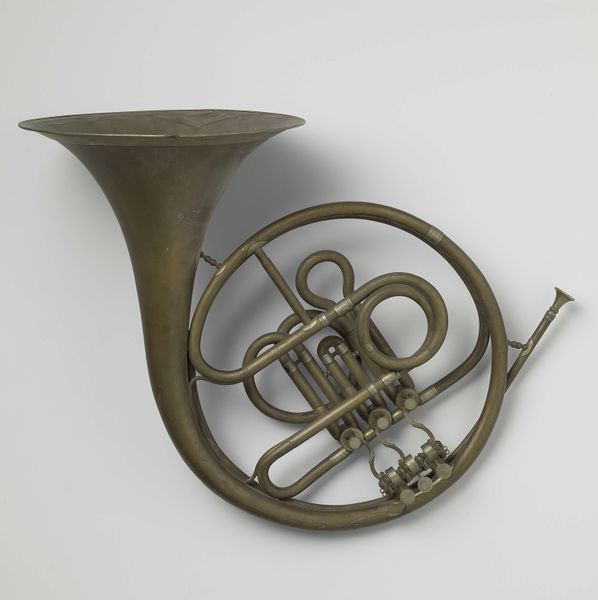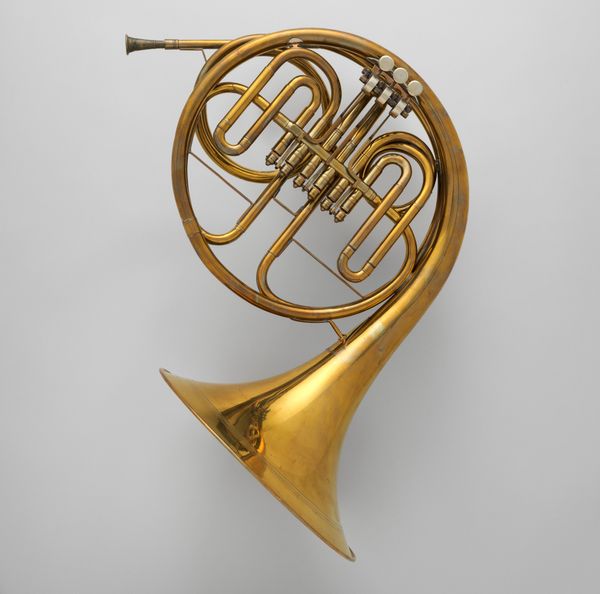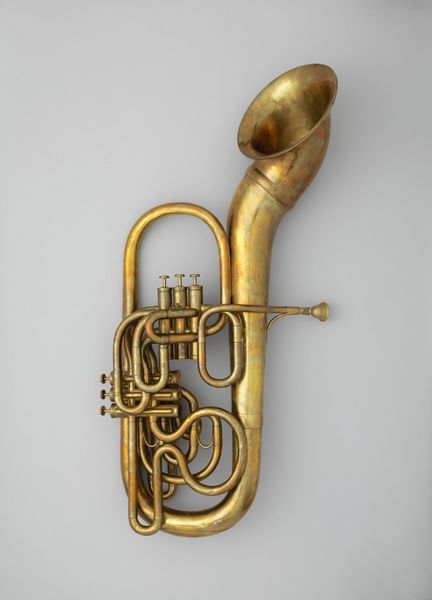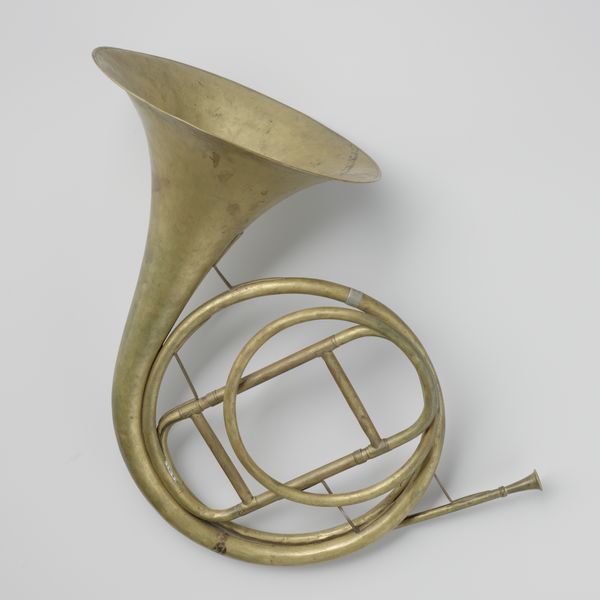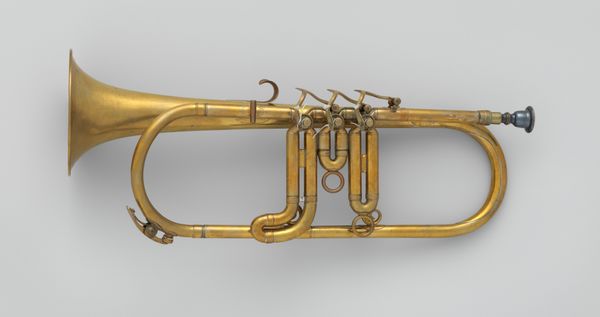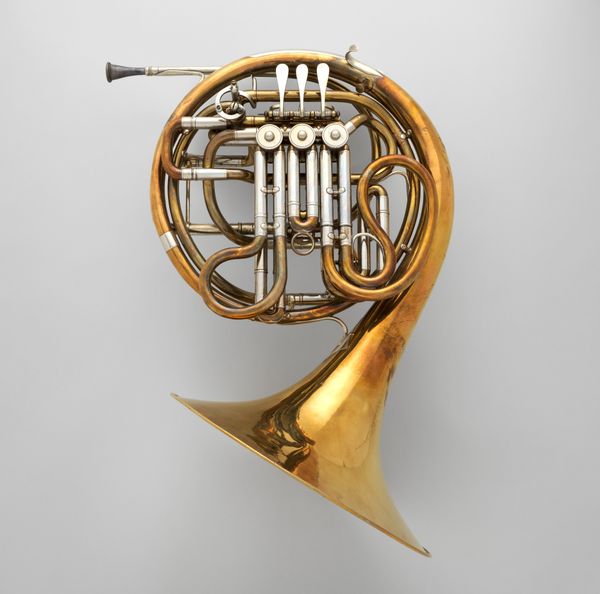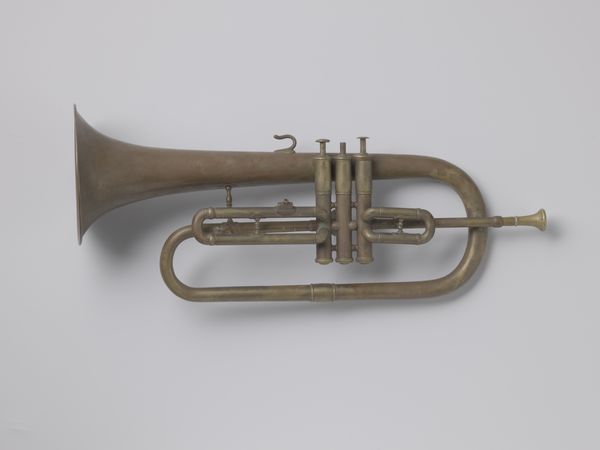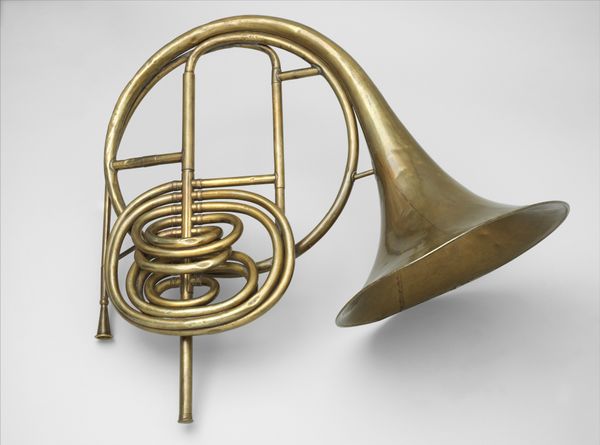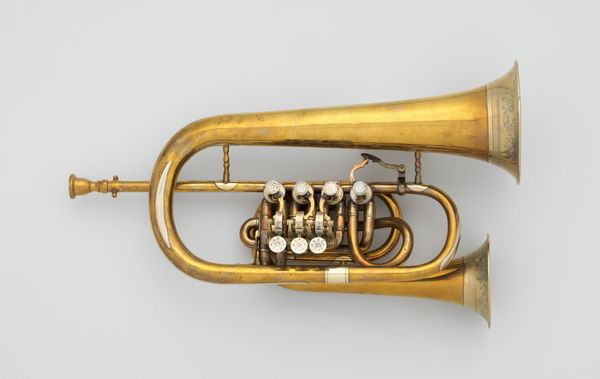
brass, metal, sculpture
#
brass
#
metal
#
sculpture
#
musical-instrument
Dimensions: 28 × 42 in. (71.1 × 106.7 cm)
Copyright: Public Domain
Editor: Here we have a French Horn, made in 1890 by Gautrot Brevete. It’s made of brass and lives at the Met. I’m struck by the beautiful, aged patina of the metal; it looks like it has so many stories to tell. What’s your take? Curator: It's tempting to consider it simply as a musical instrument, but I see a product intrinsically linked to class and power. Think about it: who had access to such instruments in 1890? The burgeoning middle class aspiring to high culture, maybe? Or perhaps a tool employed by elites to display their sophistication. Editor: So it’s more than just a pretty horn. Curator: Exactly! Consider its presence within the social and political landscapes of the late 19th century. Was this instrument accessible to all? Whose stories remain unheard within the dominant narrative it represents? I also want to note that the sound of brass, think about how this instrument can project power, particularly in orchestral settings often associated with nationalist sentiments or even military strength. Editor: I never thought about it like that! The connection to power structures is fascinating. Is there something in its structure that gives some hints of that meaning? Curator: The material, the brass, speaks of industrial production, reflecting an era defined by growing wealth and manufacturing. The shine might echo back at those elite spaces like concert halls and opera houses, which historically excluded the working classes. Considering that sound carries cultural significance - do you think it also affected communities that did not share the same culture and history? Editor: I suppose its association with privilege also implies an inherent lack of access for other segments of the population. Curator: Precisely! Art, even functional art like this instrument, serves as a mirror, reflecting the dynamics of its time and continuing to shape our understanding of it. It is our role to not just consider this instruments function, but how this function came to be at the cost of someone elses. Editor: Thanks, I learned a lot today. This helps me see past just the object itself. Curator: Indeed! Hopefully, this helps you examine what biases exist when art pieces become available, and whom they serve at the end of it all.
Comments
No comments
Be the first to comment and join the conversation on the ultimate creative platform.
